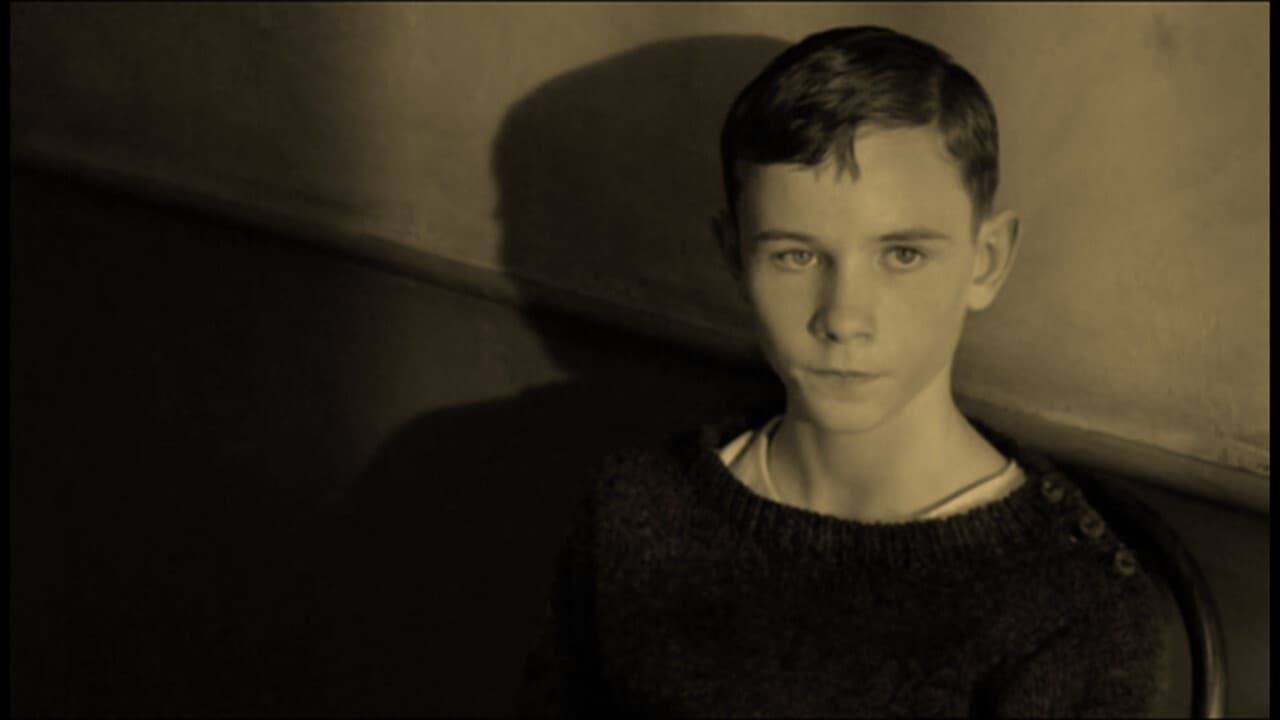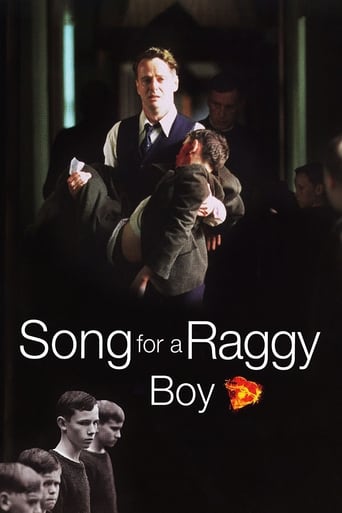


The first lay teacher, William Franklin, in Saint Jude's Reformatory and Industrial school in Ireland in 1939, coming back from the defeated republican war in Spain, had a hard time with the prefect of the school, a brutal and sadistic disciplinary brute, "brother" and why not "father" John.This first lay teacher will nearly leave some time around Christmas 1939 when John beat to death Liam Mercier, a child that William Franklin had saved from total rejection and submission to his fate of pariah. The children unanimously stopped him when he was leaving after John and his accomplice Mac, a priest who was abusing some children, had been moved out of the school, one to go preach Africans in Africa and the other to take care of a parish in the USA. In other words the murder went unpunished.Things were changing since the separation wall between the younger boys and the older boys was being brought down by the priests and by the kids. The school was finally able to contemplate a happier future and the boys committed here by justice were finally able to consider some kind of a positive future.The film insists on the fact that such boys who have been rejected by their families, then by society and locked up behind bars need like all children, but it is a lot more difficult to give them what they need, motivation to learn, understanding based on listening and love, a lot of love, and that's where this refectory and industrial school system was completely wrong. The guidance these kids needed and expected could easily be turned into complete alienation and physical violence and the love they looked for and wanted could be twisted into sexual abuse in a jiffy.The main lesson from such a real episode as depicted in this film is that these boys were not responsible for what they were to become on the basis of what they had been and had done because between the two, the past and the future, the present of education, understanding and love was transformed into alienation, deprivation, exploitation, violence and abuse by some sadistic and perverted adults, unluckily tolerated by the others who lacked the courage to say no.But the last scene of this film is a full symbol of the love these kids expect from the adult world and the love they are able to give back when they have been nourished and nurtured with what they need to be and become.This is a very beautiful film that adds to this sad Irish episode some dramatic flashbacks on the Spanish Civil War and the news about the beginning of the Second World War. Unluckily history was to make William Franklin die on the beaches of Normandy in 1944. He was not able to see the future of the world in which he had fought all his living years against injustice and violence.Dr Jacques COULARDEAU
... View MoreWhile i lived in Ireland, a friend and i went to the movies in Cork and saw "A song for a Raggy boy" i never thought i would like the movie. But guess what, it was one of the best movies i ever seen. It really touched me, I cried and felt so much for the movie. Its one of the best movies i have ever seen, and i have seen much! Now after seeing this movie i cant help but thinking of another movie that resebels this one, well not so much resembles but made me fell the same, its "Schindler's list". Both movies is based on a true story and about a man that tries to change or change others. Both these movies have an effect to make people understand how we work, and it is scary that we, as a well developed of species, act like brutal animals. Its scary to see. just as you can see it in Mel Gibson's movies "The passion of the Christ". We are not and have never been a nice species. we are just as bad as any other. But for you who want to see a movie that touches and makes you see something else then the classical Hollywood movies, see this one.
... View MoreLate last night I was watching Foxtel and I came across Song For A Raggy Boy. This movie shook me so hard that I could cry at the drop of a hat. I have no idea why this movie would rattle me more than most other movies I have seen recently - there are far more graphic and shocking movies than this. But the cruelty of the violence coupled with the students' passion and hope (as well as the inspiring school teacher) left me to turn off the TV and sit in complete darkness for what felt like hours, literally trembling.Also, as a result, I shall forever look upon Ian Glen as The Sadist Headmaster Who Thrashed The Kids Senseless. He was almost TOO good in this role. Aidan Quinn, however, has proved himself once again to be a fine actor, worthy of much more acclaim than he has received. He's not an A-lister, by any means, but he has an art, an impeccably developed craft. He blew me away in Two Of Us and...well, if I wore a hat, i'd take it off to you.
... View MoreAnother Roman-Catholic bashing film that comes hot on the heels of The Magdalene Sisters and in a very similar tone. Young adolescent boys that have got into trouble are incarcerated in a 1930s Irish Reformatory School. There they receive fascist style floggings and rape at the hands of the priests. All based on a true story and quite horrific to watch - one scene of two boys being flogged almost to death is remarkably similar to the same scene in Passion of Christ where 'Jesus' is tortured before crucifixion. Whether the film makes any significant contribution is another matter. Even in an age when courts worldwide seem embattled over paedophile Roman Catholic priests, most people are now aware of the moral paucity of that religious order without ever questioning it. Forgiveness is handed out like a rosary, pointing to the good works the church does. Even a Michael Moore might have gone a little bit further and made some comment on what has been done to prevent similar abuses in the present day and the future, or raised awareness about other catastrophes waiting to happen. Or perhaps list in the closing credits some statistics, good and bad. Even Capturing the Friedmans puts forward a real moral dilemma inasmuch as the perpetrators of abuse are also people who have done much good. Song for a Raggy Boy does none of this and so, together with the rather cheesy clichés about the 'good teacher' standing up to the evil of the Roman Catholic Church, perhaps suggests to a sated audience that the horrors portrayed might be inspired by gratuitous or commercial interest rather than documentarian passion and the fight for human rights / goodness. The simplistic approach undermines what could have been a powerful statement. Failure to distinguish and contrast the Church hierarchy, its dominance, false sanctity and the way its main players are protected, on the one hand, with the decency of the many ordinary catholics on the other, may not only rob the film of its true potential but cause people to feel embittered at being lumped together in the same religion. That the Roman Catholic Church has been capable of so much evil through its history should not cause us to hate the millions of people born into that religion, just as we should not associate modern fundamentalist Islam (and its terrorist offspring) with the millions of loving Muslims. A fleeting reference to Catholic atrocity in the Spanish Civil War is again portrayed in black and white terms, without hard historical facts that could have been appended, or any context - leaving the viewer to either be aware of the politics and religious links to fascism or dismiss them as over-embroidery. Ultimately, films such as Raggy Boy need to go more accurately to the root of the psychological dynamics that allow such evil to flourish.
... View More